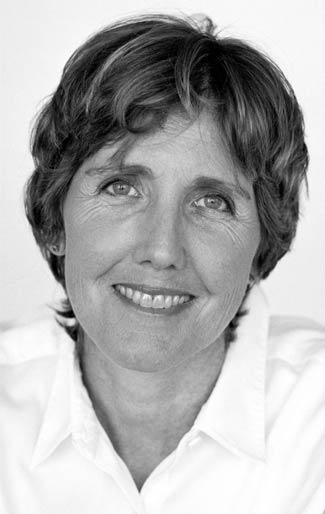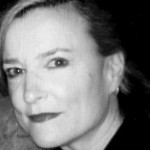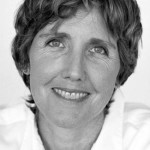By MATTHEW NASH
Looking at the websites and publications from artists and organizations throughout New England, one is struck by the consistent recurrence of the LEF Foundation logo. From large arts organizations like the Boston Center for the Arts, to universities like MIT and Harvard, and even alternative projects like the Berwick Research Institute and Big RED & Shiny, LEF is active on all levels of the arts in New England, funding projects of great diversity and depth. Between 2001 and 2006 they funded 368 projects, giving $3.8 million in support to the arts of New England. As one of the only organizations that directly fund individual projects, they are considered a vital resource for many who make work here. Recently I sat down with Lyda Kuth and Louisa McCall to talk about LEF's origins, their future, and their role as a major supporter of the arts.
MN: Let's start with some general information about LEF, such as the origins of the foundation, what types of projects you fund, your regional scope, in case our readers don't already know.
LK: The LEF Foundation was established in 1985, and I am one of the founding board members. It is a foundation that was started by my mother, and endowed by her parents. The geographic focus was determined by the two areas where family board members were living, and that was California and New England. In terms of the original mission, I need to give a little background on my mom, who is president of the board and is a big influence, passing down her values and her parents values to us kids. All four of her kids are on the board. My mom has always been a bit of a risk-taker; a sort of renegade, and my family has always been very steeped in the arts. So, we easily agreed upon this focus on contemporary work, innovative work. She was also, like her parents, a champion of freedom of expression, and I think that both these values were passed on to her kids, and invariably they have manifested in the foundation.
Early on the board recognized the valuable role that a private foundation can play, because it can take more risks, and it can fund without all of the restrictions that are on public money. This became really apparent a few years later, during the culture wars, when there was a real role for private, and especially family, foundations for providing funding for the arts.
I think that, also from the beginning, there was interest in supporting activity outside the established institutions. This had to do with both the impulse to fund innovative work, and also, well, the term "site specific", which was not the over-used term that it is now, but was then considered very forward-looking. We were also interested in this focus on site-specific work that was sited outside of the major institutions, sometimes literally and other times more figuratively. We looked at smaller organizations that were championing and exhibiting work that was outside the mainstream. We also valued access; we wanted audiences to have access to that work, and the site specific work was available for people to stumble upon.
I recently looked back on a mission statement that we drafted, it would have been probably about a year and a half after we established the foundation that we got around to doing that, and it said: "Through it's funding, LEF hopes to assist the innovative efforts of individuals and organizations seeking to expand the boundaries of artistic expression, and create new ideas and opportunities that affirm the constructive link between the arts and contemporary life." I think that we all felt that the real heart of it was this "constructive link between the arts and contemporary life," and that the work of the foundation from that point on, has been to hone what that means.
MN: Louisa, when did you become involved with LEF?
LM: I became involved in 1999, and I think that represents a transition from the history that Lyda described to a more recent history. What was happening at that time was that the offices in New England and San Francisco decided to operate more autonomously, and Lyda hired me to work with her on a strategic plan for the New England office in its now more autonomous state.
LK: Let me just fill in there -- basically it was in '93 that I moved from being just a board member to a directorship of the New England office. It was then, over the next five years, our understanding of the cultural landscape deepened and we were further refining what we wanted to do in New England. That is the point at which the board saw the sense of having more autonomy for each office to just really understand their regions and respond to them. That's when I hired Louisa, which was in the summer of '99. She later came on as staff, and we continue to have a very dynamic and positive working relationship.
MN: I think you just touched on the key issue, and why so many artists know LEF Foundation and what you do. It is because you are involved; you are at openings, meeting with artists. You're not some nameless, faceless organization that is just a deadline once a year that we all scramble to send a package to. You mentioned that you wanted to really understand the landscape on a deeper level, and I wonder what that process was like, because it seems to me that you now have a very complex understanding of what is happening and how you want to support it.
LM: I think that there are certain values that LEF has established, in terms of how it behaves. Two of those values are openness and flexibility, and I don't think LEF has ever felt that it can operate in a vacuum. When I started in 1999, working on this evaluation process for Lyda, I did do an investigation of the cultural landscape, as well as the landscape of philanthropy, to understand what the changes have been and how LEF was going to fit in with those changes.
I would say that we continue to do that sort of inventory. We make lots of site visits, of both grantees and non-grantees, and we always seek input and feedback from the artist community whenever we're re-evaluating our own practice. We have a very strong belief in a feedback loop, and we want to be as transparent in the world as we can be. Generally we are very open and we want to hear from artists, and that is one of the defining characteristics of LEF.
MN: One of the things that prompted me to initiate this interview happened when we met after The Grantmakers In The Arts Conference [1], Louisa asked the rhetorical question "What would happen if there were no LEF?" which made my train ride home terrifying because I kept thinking about that. The ideas that your question provoked, though, were pretty far-reaching. So I wonder how you see your role, where you think artists could be more proactive, or where other organizations might be more influential?
LK: I think Boston has very particular challenges. In San Francisco, where we have our other office, there are many more private foundations that fund the arts, giving hundreds of thousands of dollars. I think that Boston, as an artist community, has always had a particular set of challenges. One of those has been this lack of support for contemporary work generally. I just want to put that out there. In many respects, it’s not possible for either LEF or artists to fill that gap.
LM: I think that is actually one of the focuses of our future work, which is to figure out how to fill that gap, and how to reduce the sense of risk for arts funders. When you look at how funding works, there is a continuum from risk-averse to risk-taking, and a lot of funders will fund curated exhibitions and performances because they have been sanctioned by a curator or producer. When we work with individual artists, we are at the highest point of risk, so I think what LEF needs to do is figure out ways to enhance other potential funders’ understanding of the importance of artists and their work. There is also a need to somehow reduce the risk, so that they begin to think about investing in artists' projects and artists' work.
MN: Speaking of other funders, you are currently working with Artadia. How did that come about, and where is it headed?
LM: I started a conversation with the development director of Artadia about four years ago, out in Seattle. She began explaining the mission of Artadia to me, and it just sounded to me that what she was talking about was exactly what Boston needed, which was a program that would ratchet up the level of awareness and discussion around contemporary art production.
So, over the course of about three years, Lyda and I negotiated with Artadia and we decided to provide a leadership grant to bring Artadia to Boston. We've worked to get other funders involved, and in fact there are now other funders involved with Artadia. LEF stepped up to the plate because we don't fund artists directly, and this was a way to do that because Artadia gives money to artists directly. In addition, LEF has done a lot of research on the artist support systems in Boston, looking for the strengths and weaknesses, asking what they need, and one of the things many artists said was that it was very hard to get their work out of the city, and that their work was rarely seen by anybody outside of Boston. What Artadia does so exceptionally is that they bring curators from other parts of the country to look at the work in Boston, and once the fellows are chosen, they will hopefully be connected to this international group of curators, collectors and gallery directors. So, it's a way to get Boston art out, which is a huge plus.
LK: I think there is another side to that, which is that it is really another way to raise the valuing of art, and to have an awards program come in from the outside and validate the artists who are here making work. We are also hoping to bring some public relations and some visibility.
MN: Could you clarify one point for me? You said that you don't fund artists directly, and I think it would be great if you explained your funding process.
LK: We actually require that artists apply to LEF with a fiscal agent, which is a non-profit organization that agrees to oversee the fiscal activity of the grant. We recently have reviewed this policy, and we have in fact confirmed that we want to keep the organization involved. The reason for that decision is that we believe that the relationship between artists and organizations is really a vital one, and that organizations that do spend time with artists, nurturing the creation of their work, usually get the artists out of their own individual space and introduce them to resources and audience for their work. We really believe in that connection.
MN: I know that you fund a lot of the alternative spaces in Boston, including The Berwick, Artists Foundation, The Boston Center for the Arts, Boston Cyberarts, Axiom, not to mention several that are no longer with us.
LK: Well, part of the strategic work that we did when Louisa came on in 1999 was to really establish what it was that LEF was most focused on. That meant the production of work, the creation of art. We had been, in the late-'80s and early-'90s, a sort of catchall for contemporary work, because there weren't so many people funding it. So we were looking at all kinds of venues and all kinds of work that was not the classical style of work. So we took time to define that.
The second thing we understood was there were conditions, there was a climate, out of which the creation of work could happen. Louisa can talk about that, how that led us to certain kinds of organizations that we focused on.
LM: That's right. We actually define it as a seedbed; we realize that artists don't make work in a vacuum and that they need a good, strong environment to allow their creativity to flourish. So, we started to look for those organizations that are artist centered, and that really want to protect and nurture the creative development of artists. That led us to places like The Berwick, Artists Foundation, Oni Gallery while it lasted, Axiom, which is the exciting new space, Mobius, Art Interactive. We have also funded Turbulence several times, primarily for the commissioning of New England web art.
LK: One of the things that our grant list also reflects, and this was a value from the very beginning as well for our awards, is that we will fund activities that we think are innovative no matter the size of the institution that is doing it. So we might work with a place like the MFA if there was particular show that we thought had value, and I think that an example of that currently is at the Center For Advanced Visual Studies at MIT. They have a fabulous residency program, and that is a much larger context or institution for us to be partnering with, but it's really on an equal level for us with the smaller nonprofits we support. We also see value for both ends of the spectrum to be on that same level. It's good for both, and we value that.
- Louisa McCall
- Lyda Kuth
----
[1] - LEF Foundation arranged for a group of New England artists to participate in the Grantmakers In The Arts Conference in several capacities, and later held a meeting with those artists to discuss the outcome of their interaction with the larger conference.
All images are courtesy of the LEF Foundation.






